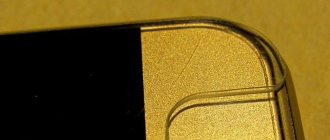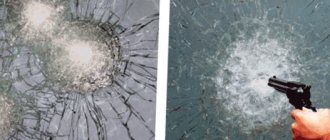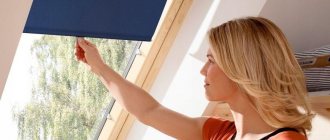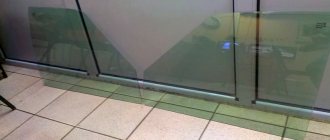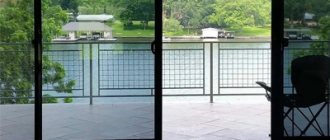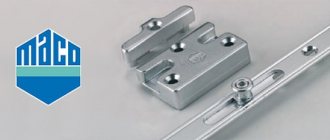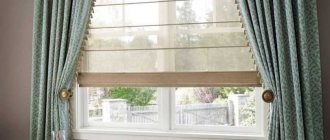The FOTOTECH company has been producing safe and protective glazing based on multilayer composite glasses for more than 30 years. Our designs are used in external and internal glazing of objects for various purposes. We produce showcases and stained glass windows, windows and doors, floors and roofing, partitions and other impact-resistant, burglary-resistant and bullet-resistant translucent structures that can withstand repeated destructive impacts of intruders and can protect against aggressive natural factors or gunfire. Our production capabilities allow us to create translucent products of any shape and size, including straight, angular, radius (round, arched), segmented. The FOTOTECH plant is a direct manufacturer of special glasses and fire-resistant structures. In the manufacture of protective glazing, we use modern materials and our own patented technologies.
You can order protective glazing from us with additional functional properties: fire resistance, noise insulation, electrical heating, variable transparency. All products meet Russian GOSTs and undergo regular control tests.
Stability classes according to GOST R 51136-2008 (and GOST R 51136-98)
The protective film varies in the degree of resistance to penetration depending on its thickness and gives the glass impact resistance in three classes according to the increasing degree of protection: A1, A2, A3 (according to GOST R 51136-98).
During tests carried out to confirm the “class”, a steel ball weighing slightly more than 4 kg is dropped three times from different heights onto glass fixed horizontally. The glass may crack, but no through hole should form and the fragments should not fall to the floor.
Below is a table of impact resistance classes of glass coated with the appropriate composition of protective films, depending on the energy of the impacts withstood.
| Protection class | Impact energy, J (kg×s×m) | Fall height, m | Film thickness | |
| A1 | 141 J | 3,5 ±0,02 | 240 microns (10 mils) | |
| A2 | 262 J | 6,5 ±0,02 | 412 microns (16 mils) | |
| A3 | 382 J | 9,5 ±0,02 | 600 microns (24 mils) | |
A car windshield usually corresponds to a protective film class from A1 to A2. The most common
is the maximum class of protective film A3 (withstands at least three drops of a steel ball from the height of a three-story building).
The 2008 edition of GOST corrects some of the wording of the previous standard, adopted in 1998, but does not change the substantive requirements.
Explosion-proof glazing
Armored film for windows allows you to improve certain qualities of glass structures.
The use of explosion-proof glazing involves applying a multilayer film with a protective anti-fragmentation effect to the glass plane. The armor base is fixed to the glass using special adhesives that dry under specific conditions (temperature and humidity matter). However, complete “adhesion” of the tinting material occurs within several days, which largely depends on the density of the coating, the number of layers used and environmental conditions. Basically, a protective explosion-proof armored film is used to cover the inside of the glass surface, but double-sided window armor is also found.
After a few weeks, the armor coating thoroughly adheres to the top layer of glass, creating a single structure with it. In order for the protective properties of the tint to be better, the material must be tightly reinforced at the edges of the frame around the entire perimeter. Installing a protective film under the bead is not mandatory and will not affect the quality of glass protection from destruction.
The armor material is transparent and completely invisible, but at the same time has excellent protective characteristics. Advantages of windows coated with protective tinting:
- improved optical effect (no distortion);
- excellent shock protection with a small film thickness (thanks to the dense adhesive layer);
- the coating is resistant to light mechanical damage (scratches);
- guarantee for work performed.
Explosion-proof glazing is used to protect against fragments of broken glass, to prevent injuries during explosions from flying fragments, to protect children in schools and kindergartens from cuts from fragments and large pieces of glass. Protective film for windows will prevent the destruction of cracked glass and will prevent children and adults from being injured by fragments, which in most cases will save life and health in the event of accidental damage to glass in windows and glass partitions.
Along with protective functions, armored film performs a number of other functions that are no less useful. The anti-vandal film coating strengthens the glass, thereby eliminating fragments in case of damage. Therefore, it is impossible to get injured from broken glass, since it remains on the film. Also, thanks to its properties, the armored film prevents complete destruction of the double-glazed window and deters intruders from entering the premises through a broken window.
explosion-proof glazing using protective tinting films in buildings for which increased security measures are a primary need: banks, administrative institutions, children's educational institutions, jewelry stores, etc.
provides services for booking glass structures at affordable prices. Our specialists will help you choose the right film and fulfill your order quickly, efficiently and inexpensively. We guarantee compliance with all terms of the contract and deadlines for the completion of work; we work for our clients.
Characteristics of 112 micrometer film according to protection class k4:
Film thickness - 100-130 microns Tensile strength - 1900 kg per cm2 Elongation at break - 150% Peel strength - 3.275 kg per cm2 Impact test - passed Visible light transmission - 90% Ultraviolet delay - 98% Solar energy reflection 12%
Used in shopping centers, residential premises, kindergartens and schools to protect children from cuts and injuries from glass.
How to order window film reservation
Very simple:
- Leave a request on the website or by phone.
- We'll call you back and arrange a visit to you to measure your glass.
- We will answer all questions regarding the choice of impact-resistant film.
- We will agree with you on the day and time of the work.
- We will provide a guarantee for the work performed
Types of protective glass by production method
Safety glasses are made in different ways:
- Hardening. The method involves heat treating sheet glass to strengthen it. First, the material is heated strongly, then cooled sharply. The process is similar to hardening steel. The resulting glass is strong, dense, and internal stresses appear. Strength increases 5 times.
- By gluing several layers of glass. Triplex is produced using this method. The material becomes impact-resistant by gluing several layers of sheet glass and polymer film. Some types of triplex are so strong that they do not collapse when fired from a weapon or even in an explosion. And if they break, they fall into small fragments without sharp edges. Read more about laminated glass in this article.
- A combination of different materials. When polyester resins are added to fiberglass, composite glass, or especially strong glass of large thickness, is obtained. It is used for glass floors, stairs, partitions, and windows. The proportion of glass fibers is 70% and the proportion of cured resins is 30%. The strength of this material is comparable to steel. And for thermal insulation - with wood. In addition, this material is lightweight, fireproof and durable.
- Strengthening with film. The technology makes it possible to produce safety glass, which is unlikely to cause injury, since a special protective film is applied to it. It holds all the fragments in place. This type of glass is lighter and cheaper than multilayer triplex, but transmits more sounds and is inferior in strength. The film can perform not only protective, but also decorative functions, for example, imparting a tint or matte finish.
- Reinforcement. The essence of the method is to add metal wire to the composition of sheet glass. It is this that performs the function of a reinforcing material. Thanks to the metal mesh, the glass does not crumble when broken and does not cause harm.
Alternative classification according to GOST 30826-2001
Alternative protection classes are also available in GOST 30826-2001 “Multilayer glass for construction purposes. Technical specifications":
| Protection class GOST 30826-2001 | Impact energy, J (kg×s×m) | Drop height, mm | Number of throws | Close class according to GOST R 51136-98 |
| P1A | 60 ±5% J | 1500 ±20 mm | 3 | |
| P2A | 120 ±5% J | 3000 ±20 mm | 3 | |
| P3A | 240 ±5% J | 6000 ±20 mm | 3 | |
| P4A | 348 ±5% J | 9000 ±20 mm | 3 | |
| P5A | 348 ±5% J | 9000 ±20 mm | 3 x 3 |

